Advertisement
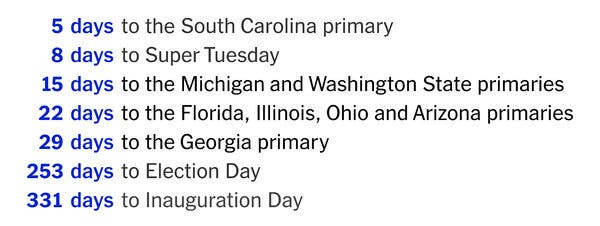
Good morning and welcome to On Politics, a daily political analysis of the 2020 elections based on reporting by New York Times journalists.
Sign up here to get On Politics in your inbox every weekday.
-
If you want to know what the candidates are thinking, just look at where they’re traveling. As the results of the Nevada caucuses rolled in on Saturday, Bernie Sanders was in San Antonio, clearly hoping to use the momentum from his win in Nevada to drive open a lead over Joe Biden in Texas. It is one of 14 states to vote on Super Tuesday — just over a week away! — and recent polls there have shown the two candidates essentially tied.
-
More to the point of San Antonio’s relevance: Among Texas’s five largest cities, it’s the most heavily Latino. Roughly half of Latino caucusgoers in Nevada backed Sanders, versus less than a third of that number for Biden, according to entrance polls. In Texas, Hispanic voters made up roughly a third of Democratic primary voters in 2016, according to exit polls.
-
The Nevada results are still not fully counted. Sanders’s seemingly wide margin of victory helped Nevada avoid becoming another Iowa, but we’re still waiting on official results from 12 percent of the state’s precincts — and Pete Buttigieg’s campaign is already crying foul about “irregularities” in the reporting process. (More on that process below, from our on-the-ground reporter, Reid J. Epstein.)
-
Even the man who was once the Nevada caucuses’ most prominent booster now thinks they ought to be a thing of the past. Harry Reid, the former Senate majority leader, was largely responsible for moving his state’s caucuses up to the coveted No. 3 spot on the nominating calendar in 2008. But on Sunday, he declared that it’s time for caucuses, with their complex and often-arcane processes, to be eliminated. “Our Democratic Party did a good job,” he told (our) Reid. “All caucuses should be a thing of the past. They don’t work for a multitude of reasons.”
-
Biden appears likely to finish in a distant second, but the silver lining is that he maintained his lead among black caucusgoers (a key base of support), capturing two of every five African-American votes. Sanders received 27 percent, good for second place among that demographic.
-
But a CBS News poll of likely South Carolina primary voters — conducted online by YouGov, before the Nevada caucuses were complete — found that Biden’s advantage in South Carolina has taken a big dip. He’s down to 28 percent (from 45 percent in November) while Sanders holds 23 percent. Tom Steyer, a billionaire hedge-fund investor who has focused heavily on winning over black voters in South Carolina, was not far behind, with 18 percent of likely primary voters.
-
There’s one race Steyer is winning by a mile: the race for eyeballs. More than four in five likely voters said they had seen a TV or web ad from the candidate. Steyer wasn’t on the debate stage last week, but he has qualified for Tuesday’s showdown in Charleston, S.C.
-
That debate, hosted by CBS News and the Congressional Black Caucus Institute, will also provide a much-needed opportunity for redemption for Michael Bloomberg. It’s the last debate before Super Tuesday, when he will be on the ballot for the first time (in all 14 participating states).
-
If the Nevada caucuses’ results hold up, Elizabeth Warren will finish fourth. It’s a weaker showing than expected after her strong debate performance in the state. But you might not want to read too much into it. When all of the ballots are counted, it seems likely that a majority will have come from the early-voting period, which ran until Tuesday, meaning Warren’s performance onstage on Wednesday did not have enough of a chance to register. Since then, a new national poll from CBS News and YouGov has shown Warren at 19 percent, putting her in a statistical tie for second place with Biden (17 percent). She also announced on Saturday that she had raised $14 million in the previous 10 days. On March 3, she will be looking to rack up strong showings, if not outright victories, in California, Texas and some of the day’s other delegate-rich contests, including in her home state of Massachusetts.
Photo of the day
Kelsey Rodriguez, a volunteer, helped direct attendees to seats and standing areas before the start of a rally at the Fertitta Center at the University of Houston on Sunday.
When analyzing the voters Sanders most relies on, pundits often examine the racial, generational and ideological divides that affect his base.
And certainly, his support differs widely along all those lines.
But there’s an often-overlooked element of his base that’s proving particularly salient: It has a notable working-class tilt. He is considerably more popular among lower-educated and lower-income voters, to a rare degree that’s more pronounced than any major Democratic presidential candidate in recent American history.
“In Nevada, we have just put together a multigenerational, multiracial coalition, which is going to not only win in Nevada, it’s going to sweep this country,” Sanders declared in Austin, Tex., on Saturday night, as the results of the Nevada caucuses came in, a nod toward the narrative he commonly uses to describe his support.
But the victory also had a clear class tilt: He won 40 percent of Nevada caucusgoers without a college degree — 13 percentage points more than his total among those with a degree — according to entrance polls.
In national polls, he is generally most popular among Democratic voters making less than $50,000 a year, and least popular among six-digit earners. (Entrance polls in Nevada didn’t ask caucusgoers about their income.)
Lower-income and lower-education voters, as well as Hispanics and young people, who are typically less likely to turn up to the polls, are also the very voters Sanders has been relying on.
So far, he’s been winning. But that isn’t necessarily because he has been able to create a surge in these so-called low-propensity voters, as his campaign has long claimed he would. In Nevada, for instance, entrance polls suggested that there was no increase in Latino turnout as a share of the vote this year compared with 2016, and the percentage of voters without a college degree actually declined.
Still, we’re only three states in. It remains to be seen whether Sanders is indeed able to drive high turnout among those who are typically disengaged, particularly those in the working class.
By Reid J. Epstein
What’s taking so long for the full results to come in from Nevada?
The reporting process for all Democratic caucuses is far more complicated this year, thanks to changes that the Democratic National Committee made after the 2016 election to address transparency concerns.
The committee mandated that the Nevada Democratic Party collect more than 100 data points from each of the state’s 2,097 precincts — and that it had to use a duplicative notation system to guarantee accuracy.
What’s more, when disaster struck at Iowa’s caucuses this month, Nevada’s Democratic Party had to ditch the app it had planned on using to tabulate results and quickly come up with a new plan. This led to a jam on many of the call-in hotlines that caucuses used to report their results on Saturday night.
Another layer of complexity comes from the fact that Nevada offered a four-day early-voting period for the first time, meaning that day-of caucusgoers’ preferences had to be collated in real time at each precinct with the early vote totals.
To understand how this cavalcade of complexity began, we have to go back four years, when Sanders narrowly lost both the Iowa and Nevada caucuses to Hillary Clinton. His supporters felt (and still feel) that he had more support — but nobody knows for sure, because the only result the state parties reported was the delegate count.
In 2017 and 2018, Sanders’s allies pushed the D.N.C. to adopt new rules requiring more transparency in caucuses. State parties now have to allow for absentee participation and report the number of raw supporters for each candidate on each round of candidate alignment.
That’s why every Nevada precinct has to report over 100 data points. Which, as it turns out, takes a long time.
On Politics is also available as a newsletter. Sign up here to get it delivered to your inbox.
Is there anything you think we’re missing? Anything you want to see more of? We’d love to hear from you. Email us at onpolitics@nytimes.com.
-
-
- See detailed results and maps that show how Bernie Sanders dominated. He finished with more than double the delegates of his nearest rivals.
-
-
- Learn more about the Democratic presidential contenders.
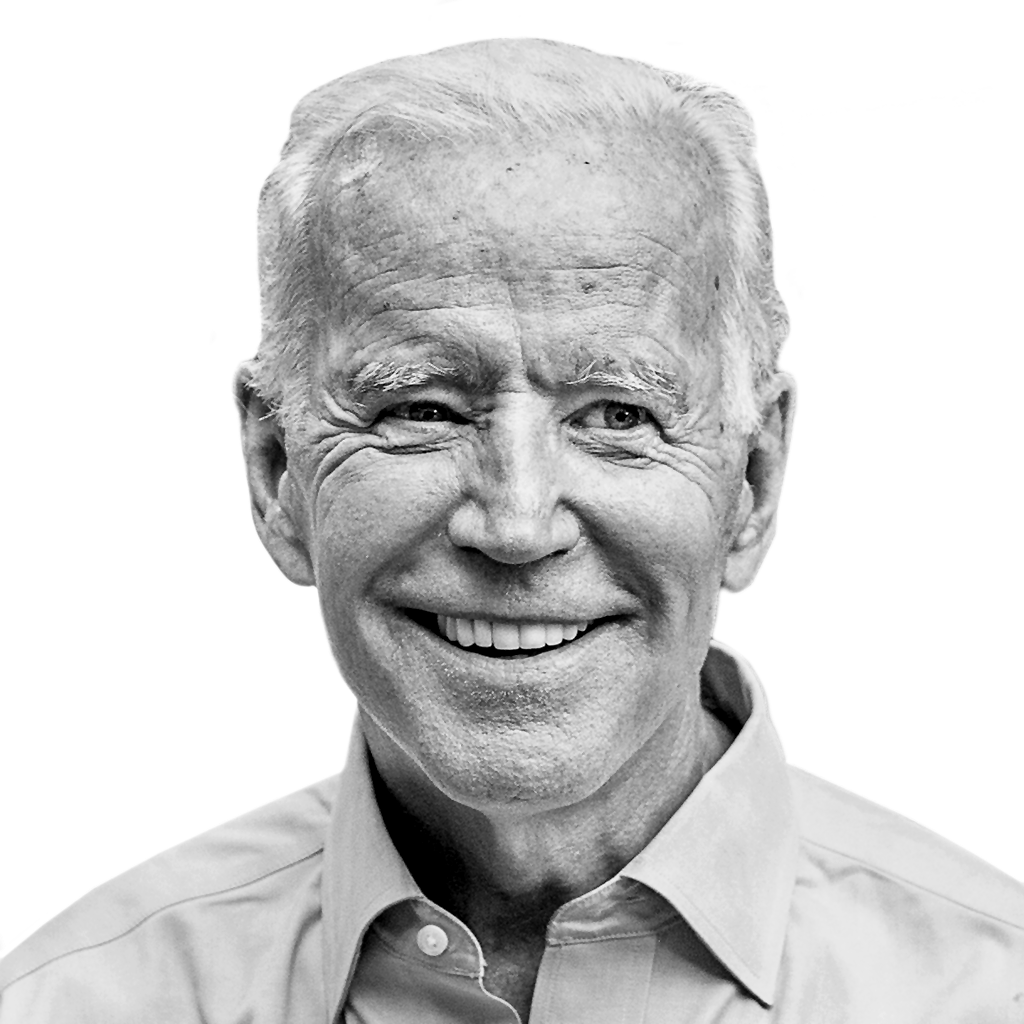
Joe Biden
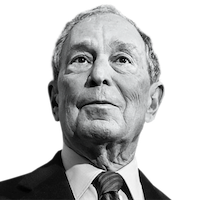
Michael Bloomberg

Pete Buttigieg

Tulsi Gabbard

Amy Klobuchar
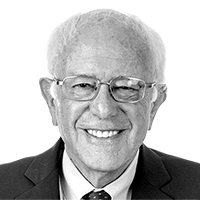
Bernie Sanders

Tom Steyer
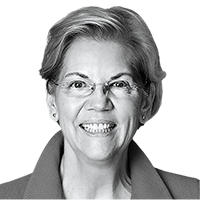
Elizabeth Warren
-


